17 things to do and see at Kampa Island (2024): Guide to Attractions & History
Kampa Island is a small area next to the Vltava river on the Lesser Town side (Mala Strana) which is partly separated from the rest of the town by Certovka Stream (The Devil Stream). You can access Kampa directly from the Charles Bridge using the side stairs close to the end of the bridge or via side streets from Ujezd on the other side.
The Kampa Island park is great for picnics, but there are also plenty of restaurants, coffee places, art gallery and museum to keep you entertained.
I’ve chosen my favourite 17 things to do and see at Kampa Island to share with you and hope you enjoy exploring the island as much as I do!

Unlike the route from the Old Town Square to Charless Bridge and then to Prague Castle, which is sometimes unbearably crowded with people, this area is always less busy and can be very quiet early in the mornings and evenings.
Whilst the north side with the wider Certovka canal reminds people Venice, the square on the other side with it’s trees, benches underneath and restaurant with tables outside, reminds me a bit of a Paris.
Kampa island and me
Kampa is one of my favourite places to visit and spend time when I’m in the old part of the town. This is probably from the time, when I was taking a year out to study English and our school building was opposite the USA embassy just a few streets away.
In the summer, our teacher would often take us to the Kampa park and we had some of our afternoon lessons there. For somebody who was brought up in the rigid Czech school system, this was a complete novelty and totally great way to learn!
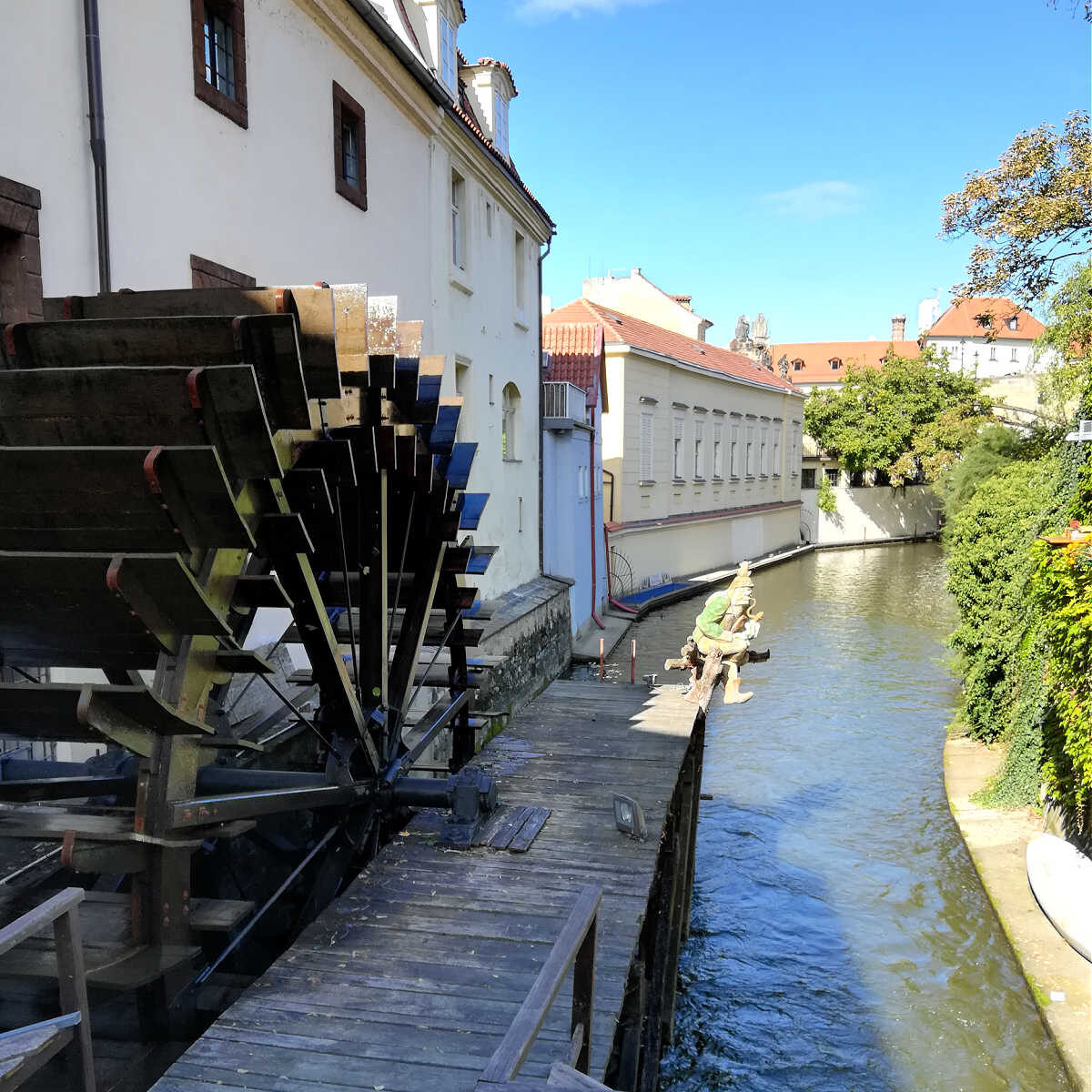
Is Kampa Island a true island?
First of all, why is it called ‘island’ when it’s not an actual island? This is because back in the 11-12 century the Vltava River would stretch all the way to the Valdstejnska Street (the street where the tram line goes from Lesser Town Square towards the Malostranska Underground Station).
The side of Petrin Hill would come down all the way towards the area where the Certovka Canal is now. The area towards the river was boggy and not suitable for building or cultivating.
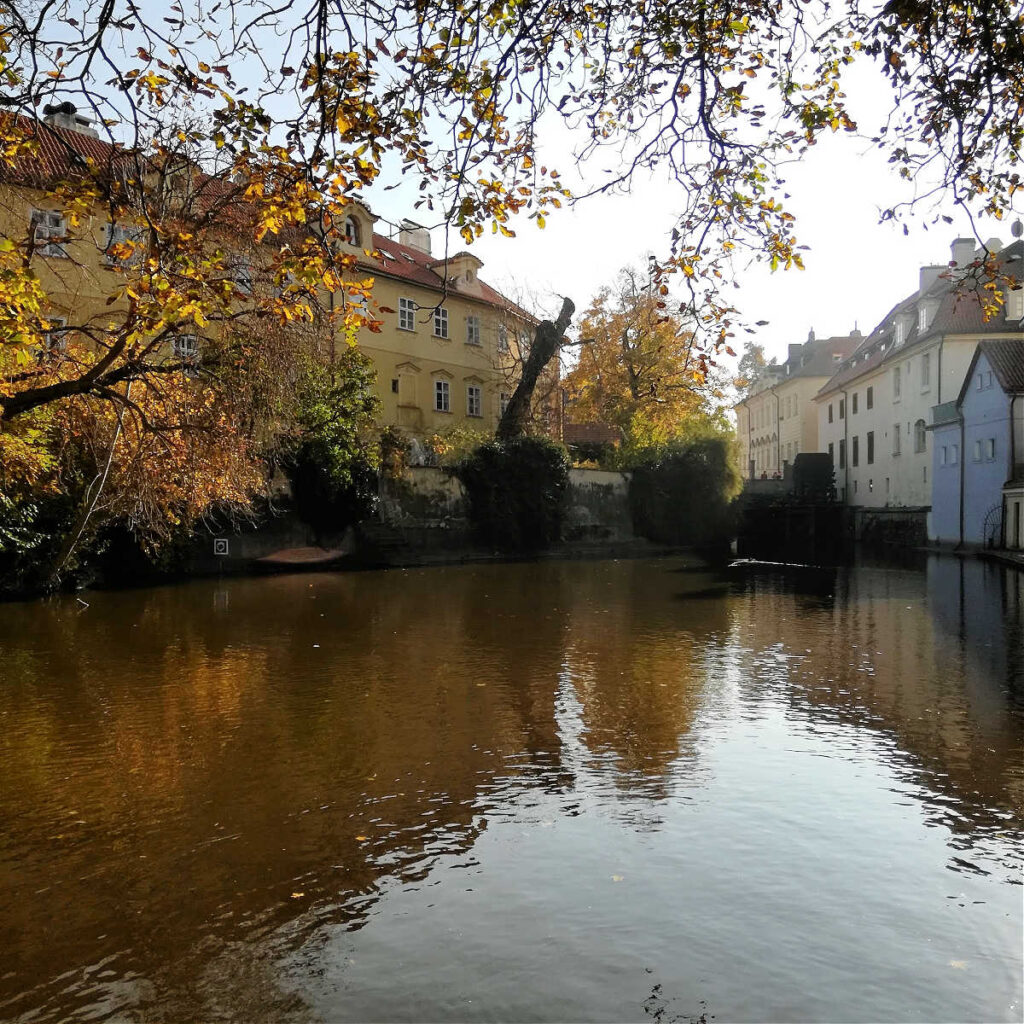
Over the years the river banks were firmed up, the river pushed back and the area where Kampa is now, started to get industrialised.
Several mills were build there and to keep the wheels turning the Certovka canal was built. This created the ‘island’ – a land that was cut off from the Vltava River by the Certovka canal.
In 1915 the Smichov Locks were built close by and the Certovka canal had to be channelled into the Vltava through a water pipe (otherwise the boats wouldn’t be able to come through safely). At that point, the access through Ricni Street for pedestrians was built and Kampa stopped being ‘an island’.
Why is Kampa called ‘Kampa’?
There is no official confirmation of the origins of Kampa’s name, but there are a lot of theories. One of the most plausible ones is that the name comes from latin ‘campus’ which means ‘field’. In 16 century the area was often flooded, which meant that nobody wanted to build houses on it and it was just a ‘field’.
The north part of Kampa is often nicknamed Prague’s Venice because the backs of the houses face directly the Certovka Canal.

What to do and see on Kampa Island
Certovka Canal Boat Trips
One of the ways to explore the Certovka canal is to take a short boat ride, that will take you under the bridge, close to the old mils and the backs of the old houses in the area that’s called Prague Venice.
The boat trips start under the bridge and you can’t miss the staff dressed in old-fashioned blue and white boating clothes as you walk under the Charles Bridge.
Children’s play ground
If you are travelling with children, you might like to spend some time in the children’s playground on the left side of the bridge. There is also a really good side view of the Charles Bridge and a perfect photo opportunity.
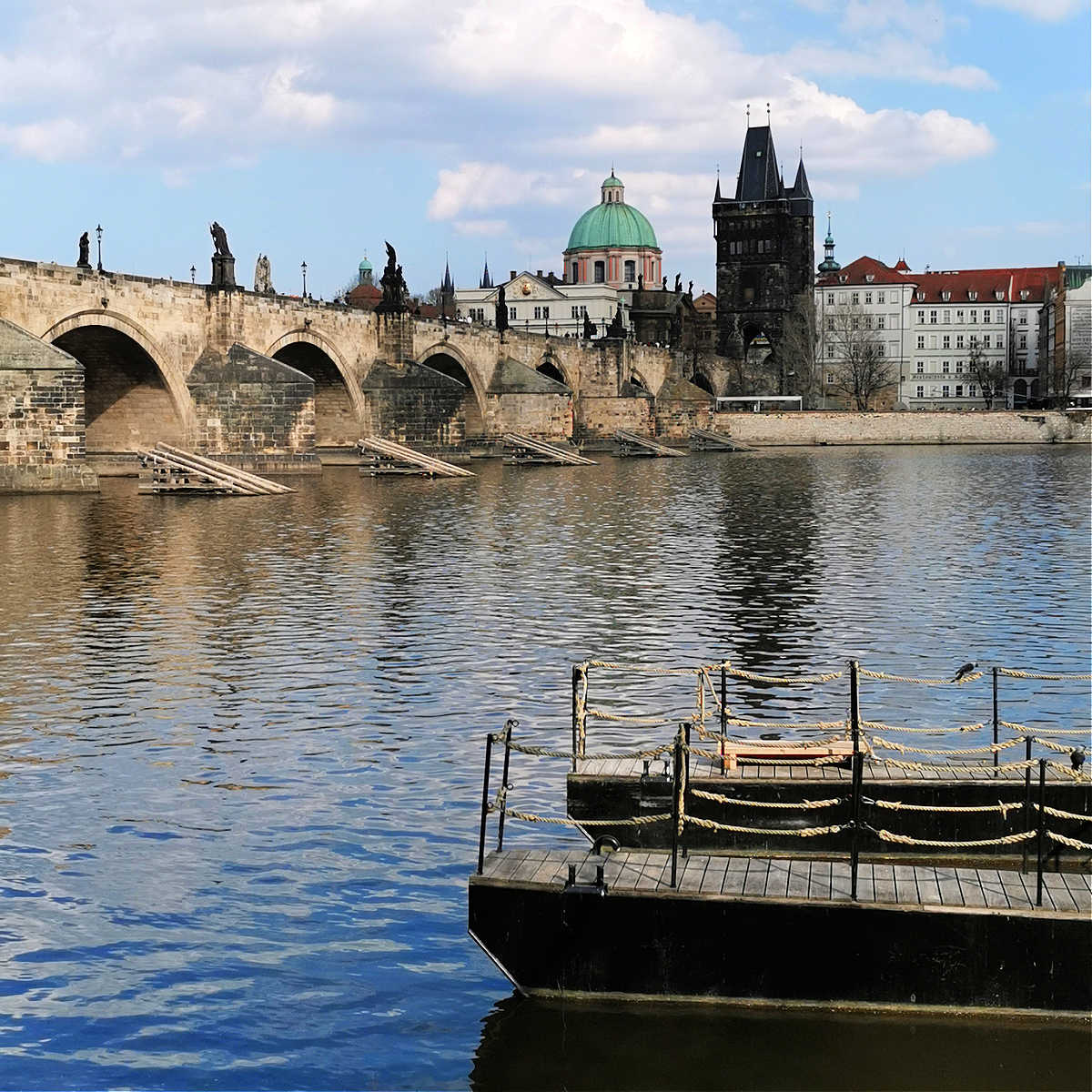
See the Charles Bridge from a different angle
Ever wondered how you can take a great photo of Charles Bridge, when it’s busy with tourists and crowded all the time? Step down into the Kampa Island and walk towards the river on either side of the bridge.
This will give you a different angle depending on the time of the day (ideally, you want to have a light behind you lighting up the bridge). This way it doesn’t really matter that there are still a lot of people on the bridge, the picture will look fab no matter what!
If you want to get the best light, come here very early in the morning (like 5 am in the summer) and you won’t be disappointed. I’m pretty bad at getting up super early, but even I had to admit it was worth putting the alarm clock for!
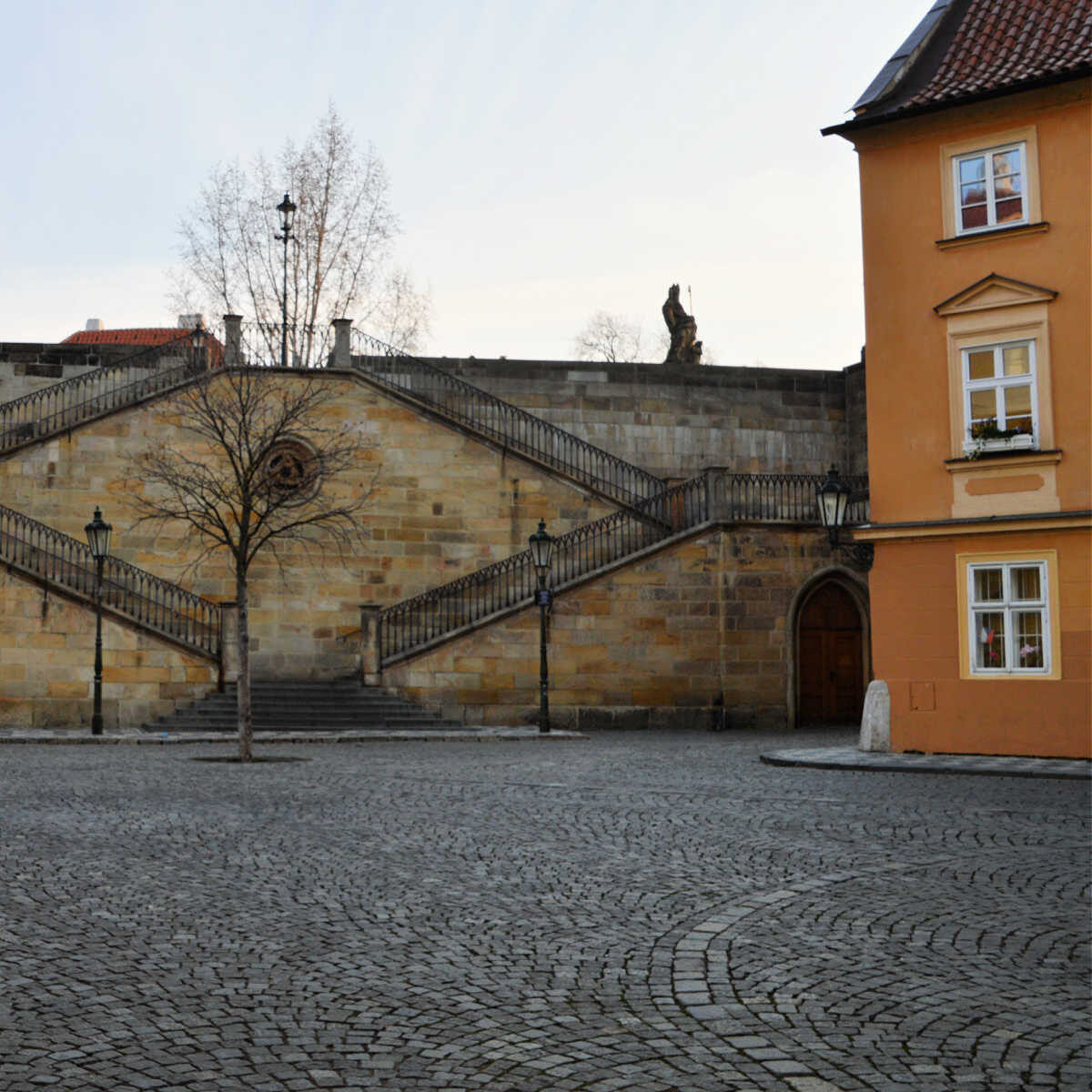
Have a picnic in the park
Pick up some local produce in shops on the way to Kampa and have a picnic on the grass.
It’s best to stick with a soft drinks (as it’s not allowed to drink alcohol visibly in the public areas) and have a glass of something stronger in one of the cafes or restaurants around the island.
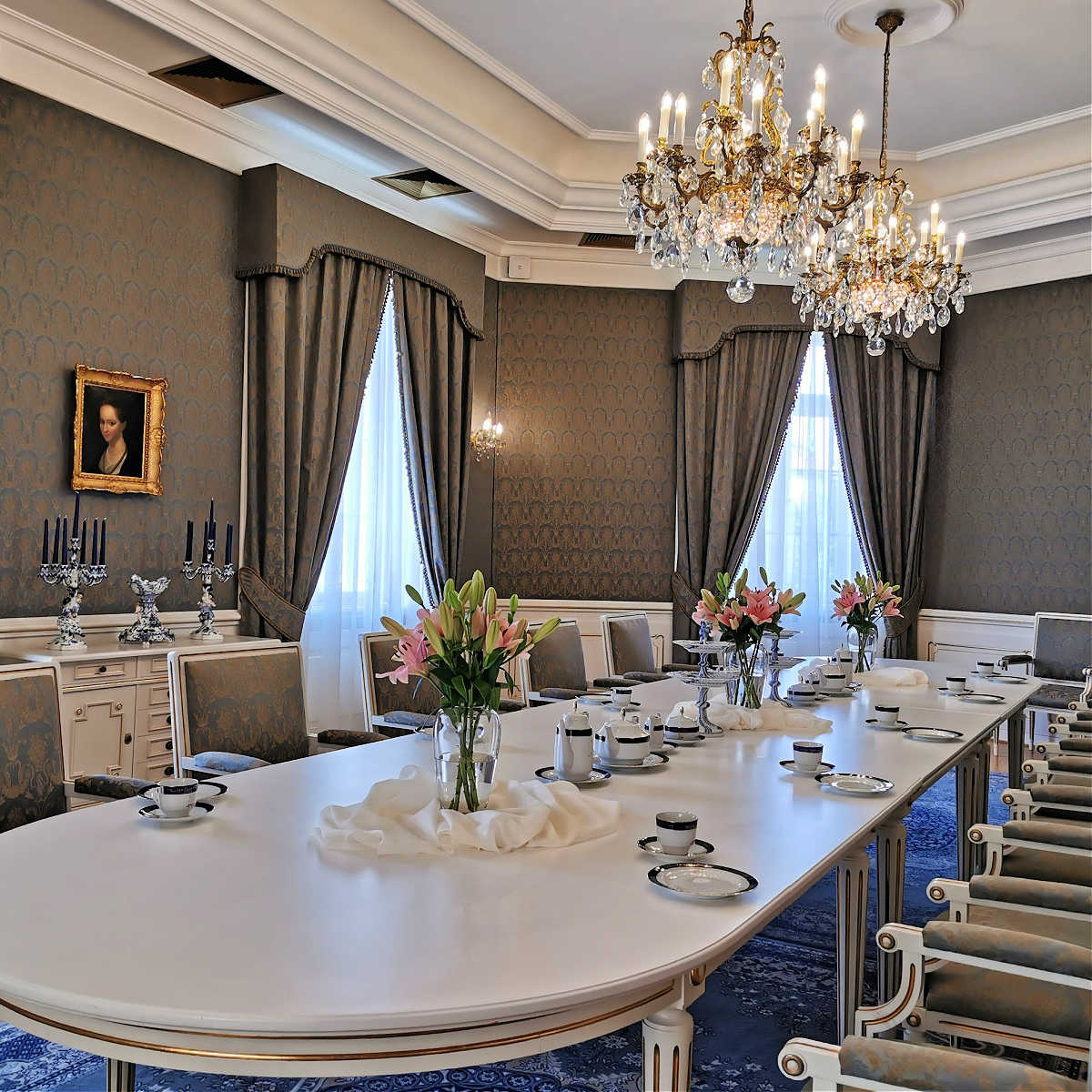
Visit the Liechtenstein Palace
On a special days through the year (usually on the Czech national public holidays that are linked to celebrating the Czech Republic – such as 5 & 9 May, 29 September, 28 October and 17 October) you can visit the palace for free.
The entry is possible only as a part of a guided tour, which is only in Czech language, but nobody will mind if you join the tour. The visit usually lasts about 45 minutes and if you read up on the palace before you go (or after) it’s a great opportunity to see a beautiful building inside that’s normally closed to public.
I’ve had the chance to visit the palace recently and until then didn’t quite appreciate the colourful history behind this place.
The Liechtenstein Palace was originally built in baroque style, designed by Giovanni Battista Alliprandi.
Over the years, the palace was owned by the Kolowrat family, the Liechtenstein family (after whom the palace is named), and the Odkolek family. Odkolek had a successful bakery business and bought also the nearby Sovovy Mlyny (The sova mills) at Kampa (it’s the large white building that’s now the Kampa Gallery Museum). I’m guessing he saw the Lichtenstein Palace more as a practical building for his business than a historic baroque palace, because he added another floor on the top, taken down towers and changed the entrance to the palace.
From 1940 to 1945, the regional leadership of the German Nazi Party was housed in the palace. At that time, the garden walls were demolished and a Hitler Youth training ground was built there instead of the garden.
After 1945, a city park was created on Kampa Island and various state institutions, such as the State Committee for Construction and the State Planning Commission, took turns in occupying the palace. In 1958, the palace was declared a cultural monument and since 1978, it has been owned by the Office of the Government.
The whole building was renovated several times during the last few decades and is currently being used as venue for conferences, government protocol events, and also as an accommodation for state delegations. In the past, Spanish King Juan Carlos and his wife Sofia, British Queen Elizabeth II, and Japanese Emperor Akihito and Empress Michiko all stayed at the palace.
See the outdoor exhibition
As you enter the park part of the Kampa, you will see a large grassed-over area, that’s often used for outdoor exhibitions and various art displays.
Browse through the market (on special days & Christmas)
In the middle of the Kampa square (you can see it from Charles Bridge) you’ll often find markets with food, crafts and local produce.
In the olden times, this is where the Prague’s potter’s markets were held regularly and it’s still a lovely setting for a market stalls set in the shade of the large trees.

Statue of Bruncvik knight
This is just a little fun fact, that you might like to know (for the pub quiz…): The small statue of Bruncvik standing on one of the lower pillars of Charles Bridge is often talked about as the only statue that’s not on the Charles Bridge.
The sculpture was made by Ludvík Šimek and was installed on the bridge in 1884.
According to legend, Bruncvík was the son of Czech prince Žibřid, who gained the eagle symbol for the Bohemia coat of arms. Bruncvík thought that wasn’t good enough and decided to travel the world fighting various animals and monsters. During his adventures, he saved the life of a lion by killing a terrible dragon. For his bravery, he gained the lion as his coat of arms.
The reason why Bruncvik statue is placed underneath the bridge rather than on the top is (depending on which historic source you are looking at…) probably because the statue was marking the boundary between Lesser Town and Old Town and it also symbolised that Old Town had the right to charge people a tall (fee) to walk across the Charles Bridge.
Velkoprevorsky Mlyn – the Grand Priory Mill
This is one of the oldest mills still standing in the area – originally from the 16 century. You can see the mill on the way to the Lennon Wall and there is a restaurant opposite where you can have a meal at the table on the balcony overhanging the Certovka Canal.
Werich’s Museum & Caffe
This museum is in the villa in which Jan Werich lived for nearly 32 years (from 1948 to 1980). Jan Werich was well known Czech actor, play and film script writer who worked with Jiri Voskovec (another actor/writer) and Jaroslav Jezek (music composer). His plays and films are still relevant now because they were brilliantly written and performed.
The cafe has beautifully made cakes and desserts, which look as good as they taste. They are perhaps slightly pricier than regular cakes in the cafes, but no more than prices of cakes the centre of Prague. Plus it’s a very pretty cafe to enjoy your coffee and a cake in.
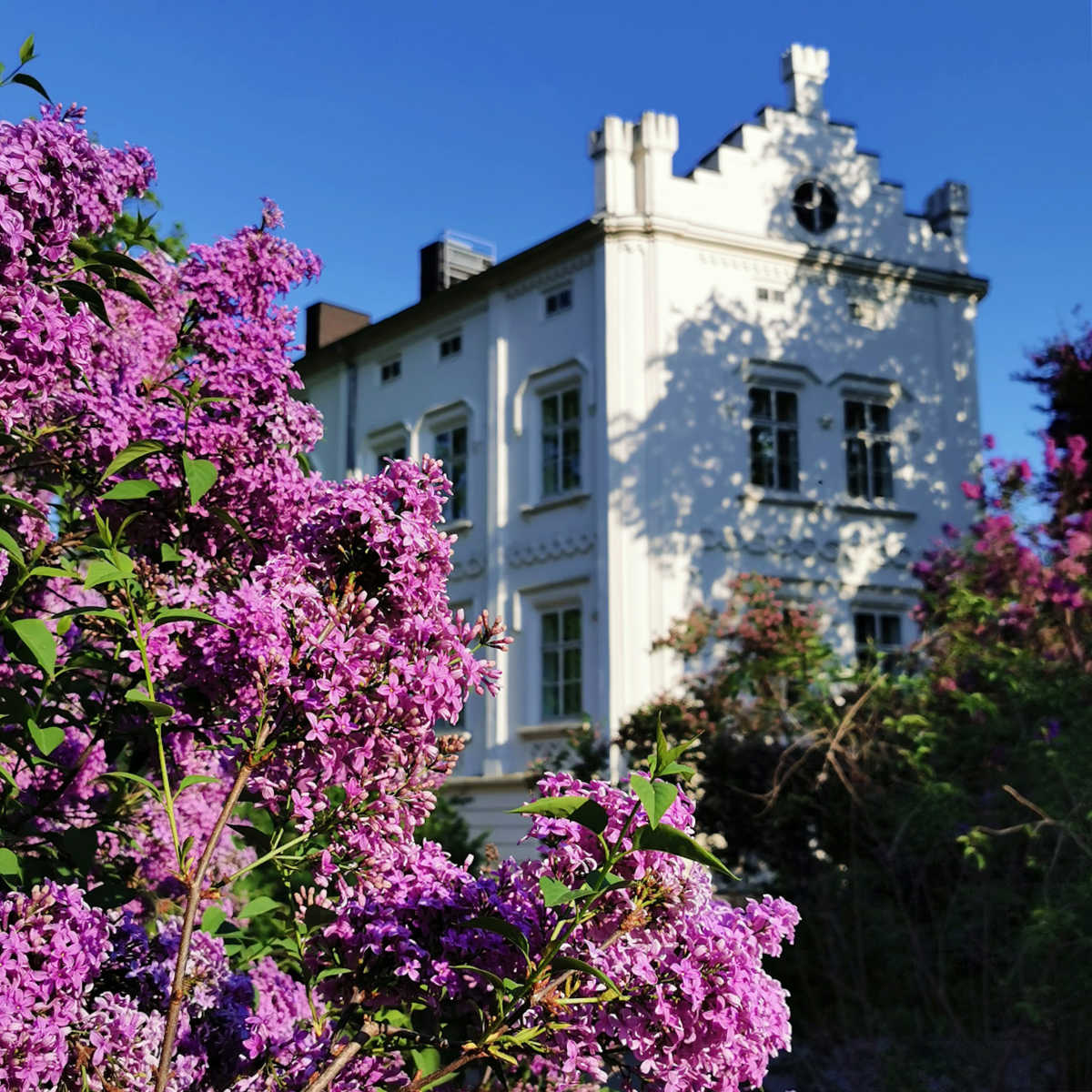
Museum Kampa (in Sova Mills)
Whilst called ‘museum’ it’s a more of a art gallery with exhibitions of contemporary art, paintings and illustrations.
There are statues in the museum garden and entrance, so even if you don’t have the time to look around, it’s worth just exploring the outside of the museum.
There is also a cafe and bistro/restaurant with beautiful views of Charles Bridge (a perfect photo opportunity), Vltava River and the other side of the river banks with Charles Spa buildings.
Yellow Penguins
Close to the Sova Mills, you can see a row of 34 yellow penguins lined up on the end of the Smichov Locks. At night they light up, which is pretty fab and a great opportunity for a photo! This art installation was made in 2008 by a group of artist and it belongs to the Museum of Kampa.
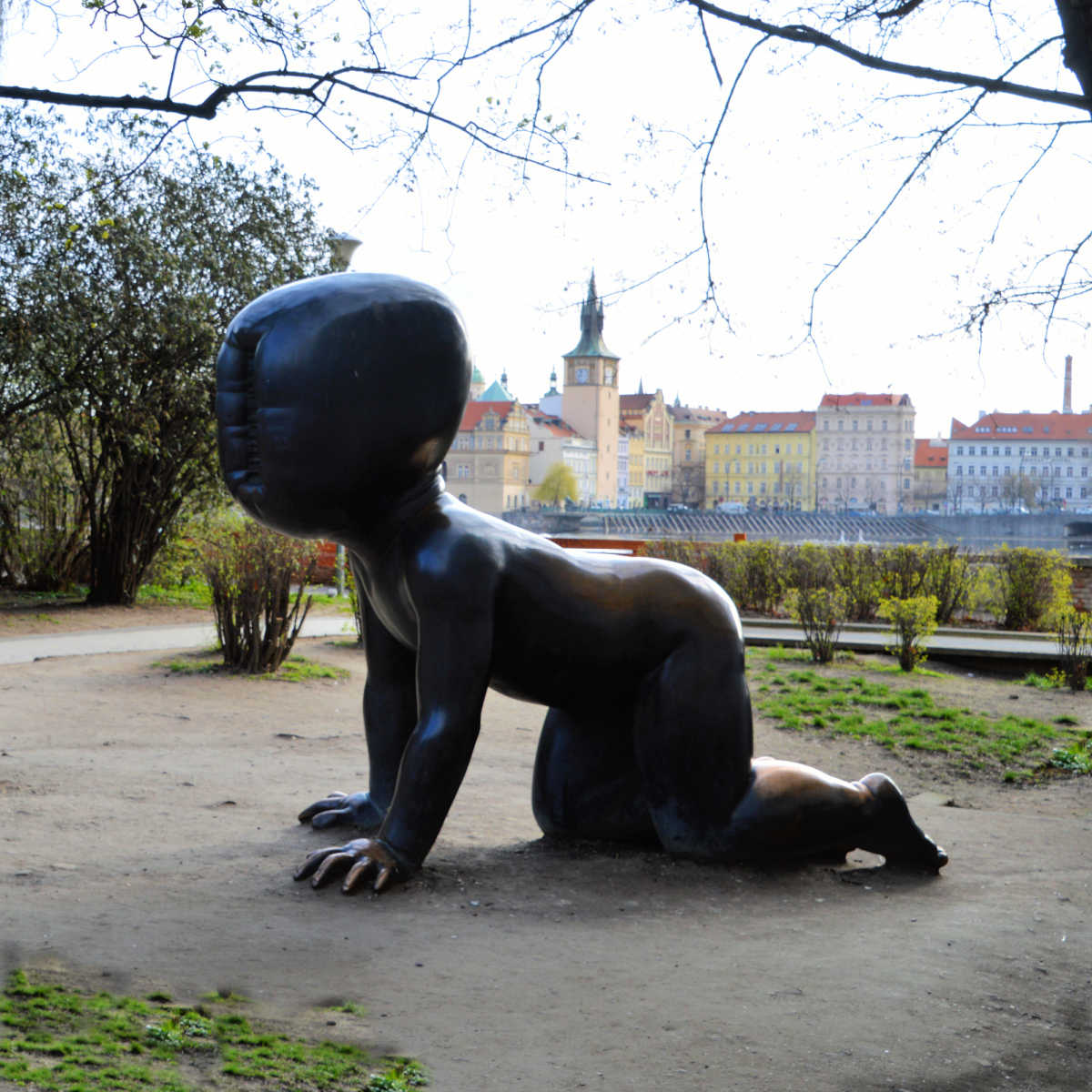
Crawling Babies
These large crawling babies with rather scary faces were designed by David Cerny and they are similar to the ones you see on the Zizkov Television Tower.
You can see more work by David Cerny around the centre of Prague (for example the upside-down horse in the Lucerna Passage on Wenceslas Square or the Kafka’s Rotating Head close to Narodni Trida (the National Street).
Have a coffee at the Mill Coffee Place – Mlynska Kavarna
Another mill building (and it’s turning wheel) can be seen at the end of the Kampa park (towards the Smichov and Ujez side of the island). It’s now a coffee place with very homely feel, decent drinks and coffee choices and small bar snacks.
Kampa Community Centre
This is a little house at the beginning of the Kampa Park, which is used as a community centre that runs workshops, concerts and exhibitions. When it’s open you can also get drinks there and simple savoury and sweet snacks.
I usually see somebody playing the piano inside and the building is decorated with a fun murals inside. This is a definitely a local place, so when you go and pay for your drinks they ask you to pay what you think it’s worth!

Scout Institute at the Old Fisherman’s House
In the last year, this has definitely become one of my favourite places on the Kampa Island. The Czech Scout Institute runs creative workshops for children and adults, and organises events and exhibitions.
And the best part is that there is a laid back cafe place downstairs, where you can chill out, work and have a great coffee and homemade cakes. When the weather is good, I take my coffee and open sandwich down to the Vltava river and read a book or watch boats going through the Smichov Locks. It’s a bliss…
Listen to the concert during the United Islands of Prague festival
The United Islands of Prague is an annual music festival that takes place on the river Vltava islands in Prague, including the Kampa Island.
The festival was first held in 2004 and has since become one of the most popular music events in the city. The festival features a diverse lineup of local and international artists, with performances across multiple stages and genres, including indie rock, electronic, hip hop, and more.
The festival typically takes place over a weekend in early June and attracts thousands of visitors each year. In addition, to live music, the festival also offers a range of food and drink options, as well as other activities and entertainment. The festival has a laid-back atmosphere and the entrance to the festival is completely free of charge.
Facilities
There are public toilets (payable) at the entrance from the Ricni Street (from Ujezd/ Smichov side)
How to get to Kampa Island
To get to Kampa Island from the centre of Prague, you can cross the Charles Bridge from the Old Town to the Lesser Town and then walk until you see the Kampa Square and steps that will lead you down to the island.
You can also get the tram to Malostranske Namesti (Lesser Town Square) or Hellichova or Ujezd tram stop on tram number 22 or number 9 (Ujezd stop only) and walk through the cobbled stoned streets towards the river to reach Kampa that way.
If you are coming from the Ujezd (Smichov) one of the easiest way is to walk through Ricni Street. You can also come via Lennon Wall which is just outside the Kampa Island.
This blog post was originally written on 22 April 2022 and last updated on 5 June 2023
PIN TO KEEP FOR LATER







